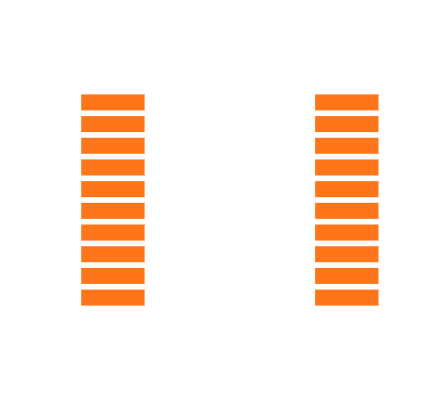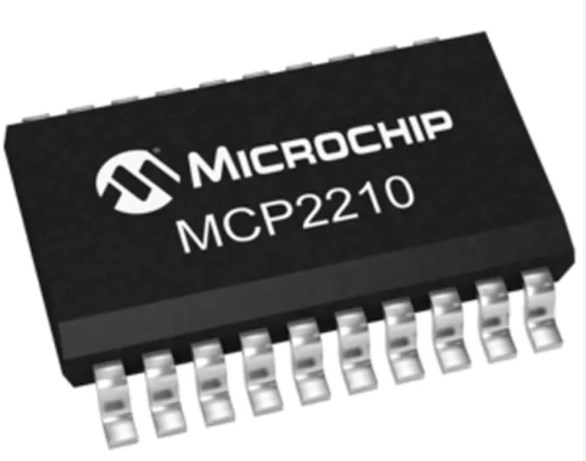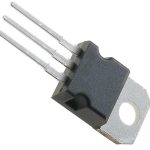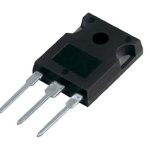Enter the MCP2210 USB-to-SPI protocol converter, a game-changing chip developed by Microchip Technology. With its ability to bridge the gap between USB and SPI interfaces, the MCP2210 opens up a realm of possibilities for various industries and applications. In this blog, we will delve into the features, practical applications, usage, and more about this powerful converter chip.
MCP2210
Introduction
The MCP2210 is a USB-to-SPI (Serial Peripheral Interface) converter chip developed by Microchip Technology. It allows for easy integration of USB connectivity with SPI devices, making it ideal for various applications that require communication between a host device and SPI peripherals.
Specs
| Product Attribute | Attribute Value |
|---|---|
| Product Category | USB Interface IC |
| USB Controllers | |
| Bridge, USB to SPI | |
| SMD/SMT | |
| USB 2.0 | |
| Full Speed (FS) | |
| 12 Mb/s, 480 Mb/s | |
| 3.3 V | |
| 5.5 V | |
| 15 mA | |
| – 40 C | |
| + 85 C | |
| Tube | |
| Interface Type | SPI, USB |
| Moisture Sensitive | Yes |
| Operating Supply Voltage | 3.3 V to 5.5 V |
| Product Type | USB Interface IC |
| Subcategory | Interface ICs |
| Unit Weight | 0.028254 oz |
Features
- USB 2.0 full-speed (12 Mbps) interface: This enables fast and reliable communication with the host device.
- Integrated 256-byte EEPROM: The built-in EEPROM allows storage of device configuration parameters, such as manufacturer and product IDs, serial numbers, and customizable settings.
- On-chip voltage regulator: The MCP2210 provides a regulated 3.3V output, simplifying the power supply requirements for connected SPI devices.
- Programmable GPIO pins: It offers four general-purpose input/output pins that can be configured to support various functions, including chip select, interrupt signaling, and general-purpose I/O.
- Flexible SPI communication: The MCP2210 supports both master and slave modes, offering versatile SPI communication capabilities.
- Device customization: The chip allows for customization of various parameters and settings through its configuration software.
Practical Applications
1. Industrial automation
It can be used to interface with sensors, actuators, and other SPI-based devices in industrial control systems.
2. Consumer electronics
The MCP2210 enables easy integration of USB connectivity with devices such as LCD displays, touch panels, and memory cards.
3. Internet of Things (IoT)
It facilitates communication between IoT devices and host systems, enabling data exchange and control.
4. Automotive
The MCP2210 can be utilized in automotive applications, such as connecting with external lighting systems or accessing data from sensors and modules.
5. Medical devices
It allows for seamless integration of USB connectivity with medical equipment, such as diagnostic devices and patient monitoring systems.
6. Research and development
The MCP2210 can be employed in various prototyping and development projects that require SPI communication.
One Model: MCP2210-I/SS
Introduction
The MCP2210-I/SS is a specific variant of the MCP2210 chip. The “I” in the part number indicates that it comes in an SOIC (Small Outline Integrated Circuit) package, which is a surface-mount package with an industry-standard pinout. The “/SS” signifies that the package has a lead-free finish, complying with environmental regulations.
PCB symbol and Footprint


Datasheet
Click here: MCP2210 Datasheet
How To Use MCP2210?
To use the MCP2210, you need to follow these general steps:
- Connect the MCP2210 to your host device (e.g., computer) using a USB cable.
- Install the necessary drivers for the MCP2210, which are available from Microchip’s website.
- Use the MCP2210 configuration software provided by Microchip to configure the device settings, including SPI clock frequency, GPIO pin functions, and other parameters.
- Write or modify your application code to communicate with the MCP2210 using the appropriate programming language and libraries.
- Connect the SPI devices you want to interface with to the MCP2210’s SPI pins, ensuring proper electrical connections and configurations.
- Implement the necessary logic in your application code to send and receive data between the host device and the connected SPI devices via the MCP2210.
Can the MCP2210 be interfaced to a USB HID device?
Yes, the MCP2210 can be interfaced with a USB HID (Human Interface Device) device. The MCP2210 supports both SPI and I2C protocols, allowing it to communicate with a wide range of devices, including USB HID devices. By configuring the MCP2210 as an SPI master, you can connect it to an SPI-compatible USB HID device and exchange data between the host device and the HID device seamlessly.
Conclusion
MCP2210 USB-to-SPI protocol converter offers a reliable and efficient solution for integrating USB connectivity with SPI devices. Its versatile features, easy configuration, and wide range of practical applications make it a valuable component in various industries. Whether you’re working on industrial automation, IoT, medical devices, or research projects, the MCP2210 empowers you to unlock the potential of USB-SPI communication.




